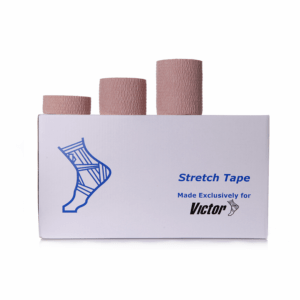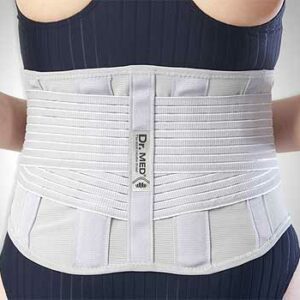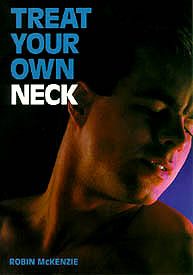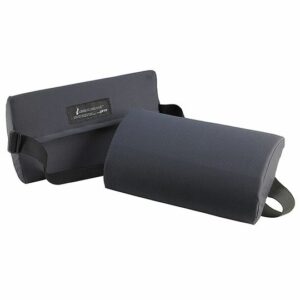Diagnostic Guide – Lower Back Pain
Updated:
Patients suffering from lower back pain are extremely common in physiotherapy practice and are arguably the most common clinical presentation. It is estimated that approximately 70% of the general population will experience lower back pain at some stage in their lives. Pain is usually caused by local structures within or around the lower back, or, may occasionally be referred from other sources (such as the upper back, or abdomen).
Sudden onset lower back pain often occurs in individuals involved with heavy lifting, bending forward or twisting activities, or, combinations of these movements. It is also relatively common for patients to experience sudden onset lower back pain during a trivial bending movement such as picking up a pencil or during sneezing. These acute injuries usually involve tearing of connective tissue around the joints of the lower back and often have associated muscle spasm. One of the most common causes of sudden onset pain in the lower back with or without pain radiating into the buttock, thigh, lower leg, ankle or foot is a Lumbar Disc Bulge (figure 1). Facet Joint Sprains are another common cause of sudden onset lower back pain (figure 2).
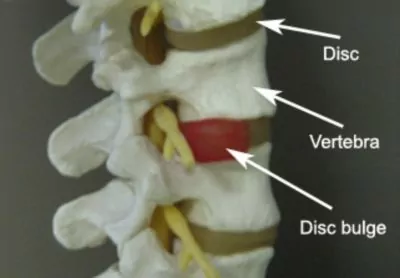
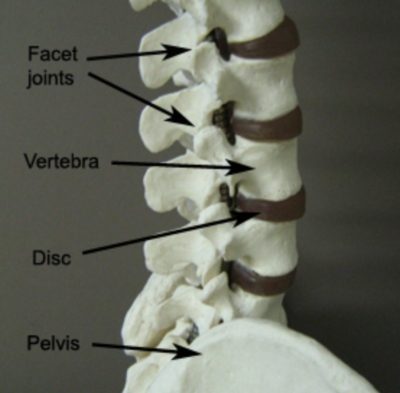
Gradual onset lower back pain often occurs in those patients involved in repetitive or prolonged bending, lifting, twisting or sitting activities (especially in poor posture) or combinations of these activities. One of the most common causes of gradual onset pain in the lower back with or without pain radiating into the buttock, thigh, lower leg, ankle or foot is a Lumbar Disc Bulge (figure 1). In older patients with gradual onset lower back pain, one of the most likely causes of symptoms is degenerative changes in the spine (i.e. Spinal Degeneration).
There are numerous other causes of lower back pain, some of which present suddenly due to a specific incident, others which develop gradually over time.
Below are some of the more common causes of pain in the lower back with a brief description of each condition to aid diagnosis. Conditions have been organised according to sudden or gradual onset and common or less common conditions for ease of use.
Find out what may be causing your lower back pain:
Sudden Onset Lower Back Pain – Common Conditions
Lumbar Disc Bulge
Tearing of connective tissue surrounding a disc in the lower back with subsequent bulging of disc material (figure 1). One of the most common causes of lower back pain, typically as a result of sitting, bending, lifting or twisting forces or trivial movements such as picking up a pencil or sneezing. May cause pain in the lower back with or without symptoms radiating into the buttock, groin, thigh, lower leg, ankle or foot and often associated muscle spasm. Pain may increase on firmly touching the affected level of the spine and spinal movement is often restricted. Occasionally there may be no lower back pain, with only symptoms down the affected leg. Pins and needles or numbness is occasionally present in the affected leg or foot. Symptoms often increase with repetitive or prolonged sitting, bending, lifting, coughing or sneezing and are often worse first thing in the morning.
Facet Joint Sprains
Tearing of connective tissue surrounding one of the joints located on either side of the spine (figure 2) typically as a result of excessive stretching of tissue usually during end of range bending, twisting, arching or lifting movements or combinations of these forces. Typically causes local lower back pain on one side of the spine that may increase on firmly touching the affected joint. Protective muscle spasm is often present.
Sacroiliac Joint Dysfunction
Damage to connective tissue of the sacroiliac joint causing one sided lower back pain below the upper aspect of the pelvis. Pain may radiate into the buttock and occasionally, the groin or outer aspect of the front of the thigh. Pain often increases on firmly touching the affected joint (figure 3).
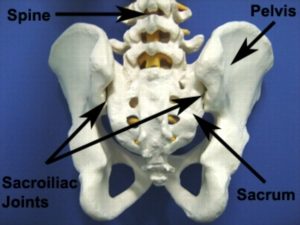
Sciatica
Compression or irritation of the sciatic nerve (figure 4) typically resulting in one sided low back pain which radiates into the buttock, thigh, lower leg or foot and sometimes includes muscle spasm, pins and needles, numbness or weakness. Usually associated with pain and reduced flexibility in the affected leg when performing a straight leg raise (figure 5).
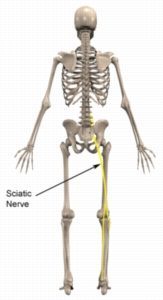

Less Common Sudden Onset Conditions
Spondylolisthesis
Slipping of one vertebrae forward on another typically due to a defect in a section of bone located on the sides of the vertebrae which may develop during early childhood. Frequently asymptomatic in minor cases (grade I). More severe cases (Grade II or greater) may experience lower back pain with or without leg pain that typically increases with activities involving arching of the spine (spinal extension – figure 6) and eases with sitting or bending forwards.
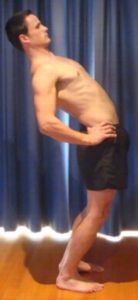
Vertebral Crush Fracture
A fracture of the vertebrae (figure 1) characterised by collapsing of the bone and reduction in height of the vertebral body. More common in elderly women and often occurs in association with osteoporosis. May occur with or without trauma and typically causes significant pain, loss of spinal range of movement and tenderness on firmly touching the affected vertebrae. Symptoms typically increase during standing, walking, lifting or carrying.
Gradual Onset Lower Back Pain – Common Conditions

Members Only ContentBecome a PhysioAdvisor Member to gain full access to this exclusive content. For more details see Become a Member. Already a member? Login Now
Less Common Gradual Onset Conditions

Members Only ContentBecome a PhysioAdvisor Member to gain full access to this exclusive content. For more details see Become a Member. Already a member? Login Now
Diagnosis of lower back pain
A thorough subjective and objective examination from a physiotherapist is usually sufficient to diagnose the cause of lower back pain. Investigations such as an X-ray, ultrasound, MRI, CT scan, bone scan and occasionally a blood test are often required to confirm diagnosis and rule out other injuries.
 Find a Physio
Find a Physio
Find a physiotherapist in your local area who can diagnose and treat patients suffering from lower back pain.
 More Information
More Information
- View more Lower Back Flexibility Exercises.
- View Lower Back Strengthening Exercises.
- View Beginner Pilates Exercises to improve your posture and core stability.
- View Massage Ball Exercises.
- View Core Exercises.
- View detailed information on initial injury management and the R.I.C.E. Regime.
- View detailed information on when to use Ice or Heat?.
- View detailed information on Posture and Ergonomic Computer Setup.
- View detailed information on Safe Lifting.
- View detailed information on Lower Back Taping.
 Physiotherapy products for lower back pain
Physiotherapy products for lower back pain
Some of the most commonly recommended products by physiotherapist for patients with lower back injuries include:
To purchase physiotherapy products to assist with rehabilitation click on one of the above links or visit the PhysioAdvisor Shop

Link to this Page
If you would like to link to this article on your website, simply copy the code below and add it to your page:
<a href="https://physioadvisor.com.au/injuries/lower-back”>Diagnostic Guide – Lower Back Pain – PhysioAdvisor.com</a><br/>PhysioAdvisor provides a lower back pain diagnosis guide created by experienced physiotherapists for patients suffering from back injury.
Return to the top of Diagnostic Guide – Lower Back Pain.


